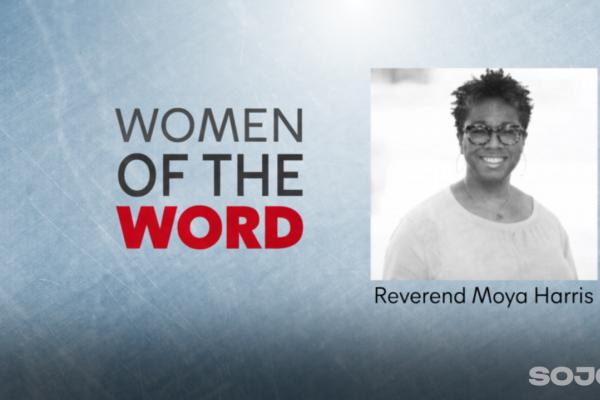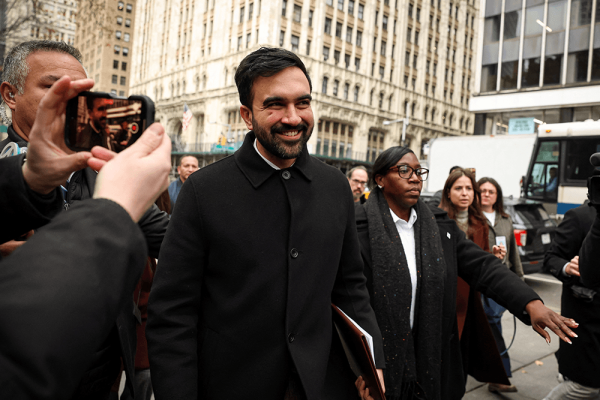ON MARCH 11, 2020, the World Health Organization declared a global pandemic of covid-19. The virus causing covid had already been circulating for at least four months. People were dying from some kind of strange pneumonia. In the five years since, our world has changed. As of December 2024, there were more than 7 million covid deaths worldwide (the actual number is likely three times that high) and 1.2 million were in the United States. The coronavirus has left an indelible mark on relationships, social institutions, and politics.
In 2025, we are still dealing with the shock and trauma of who and what we lost. Our sublimated grief, confusion, and anger too often manifest as personal denial, social apathy, or political individualism. All while the virus persists among us. For proper healing and to navigate this “new normal,” we must first square the last five years.
From the jump, the U.S. failed to provide an adequate pandemic response. President Donald Trump, in his first term, was handed an unexpected event — but not an unprecedented one. Preparations for a mass public health event were available, but by politicizing public health his administration left the country vulnerable. In 2018, Trump’s national security adviser oversaw the disbanding of the global health security team. Trump’s adversarial stance toward China, including increased tariffs, negatively impacted the supply of personal protective equipment (PPE) available in the U.S. In those first key months, the administration chose propaganda, not science, to fight the pandemic. In May 2020, Trump pulled the U.S. out of the World Health Organization (as he did again in January this year), which was coordinating a global response.
DURING THE 2020 presidential campaign, then-candidate Joe Biden promised to streamline the covid response. In 2021, his new administration launched free coronavirus testing and vaccinations. The American Rescue Plan (ARP) unlocked $1.9 trillion to “accelerate America’s vaccination effort, cut child poverty in half, extend a lifeline to the unemployed, provide aid to working families, ensure that state and local governments can keep providing needed services, and provide resources to allow schools to reopen safely.” Through the ARP, community care finally came to the forefront. But, far too soon, the Biden administration determined it was politically expedient to “end the pandemic.” Public health departments began priming Americans to accept the “end” of the pandemic — as if the virus just left as “mysteriously” as it appeared. The administration promoted vaccine messaging that, while helpful, failed to account for ongoing breakthrough infections. In spring 2023, under pressure from a Republican-controlled Congress, Biden signed a resolution to end the public health emergency. What he actually ended was many of the ARP protections, including free vaccines and antiviral medications, and access to Medicaid for 4 million people.
In our landscape of bipartisan dysfunction and politicized public health, the U.S. suffered more per capita covid deaths than any other country. Countless numbers of people have developed covid-impacted health conditions. More than 17.6 million are living with “long covid,” a chronic condition that occurs after infection.
Covid remains. Those with updated vaccines are 54% less likely to get the virus. Unvaccinated adults have a five times higher risk of infection. Poverty, especially in Black, Latino, LGBTQ+, and elderly communities, is one of the greatest contributors to disparities in covid health outcomes.
Five years on, we face a critical juncture: Do we accept health disparities and disproportionate health burdens on the poorest as part of the “new normal” or do we demand a robust public health system, effective public health education, and equitable access to health services?
We can have the latter, if we want it. Mitigations adapted in 2020 remain valuable today — from masking in public spaces to improved HEPA air filtration. We can refine and replicate effective ARP policies; fund vaccine developments to slow breakthrough infections; fund wastewater monitoring to track viral spread; and improve air quality in schools, hospitals, and workplaces. We have the technology — we just need the political will.
During a 2023 covid spike, Dr. Anthony Fauci, former medical adviser to Biden, noted that during covid surges “you’ll find the vulnerable will fall by the wayside.” Do we have the moral reserve in 2025 to follow Christ’s call to care for “the least of these” (Matthew 25:40) and refuse this outcome? Strong public health requires resilient and creative communities. For example, self-organizing “mask blocs” provide free high-quality masks, PPE, and education to their community. Advocacy groups, such as Long Covid Justice, provide organizing resources and access to financial support for those with chronic post-infection conditions.
Churches and other community institutions can learn, adapt, and innovate to meet the needs of those around them in this “new normal.” With spiritual resolve and smart action, I pray that we’ll respond effectively to covid’s ongoing harms, protect those most acutely vulnerable, and prepare well for a future we face together.

Got something to say about what you're reading? We value your feedback!







